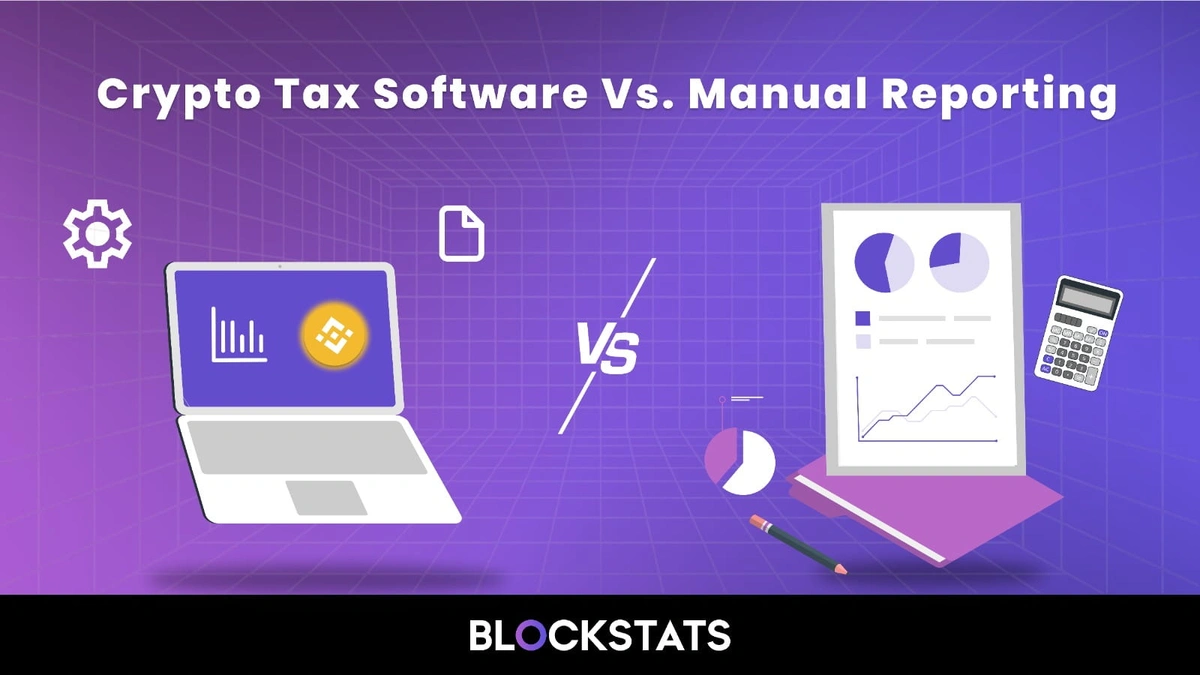Crypto Tax Software vs. Manual Reporting: Pros and Cons
As cryptocurrency adoption grows, so does the need for accurate tax reporting. Whether you are a casual investor or an active trader, filing taxes on digital assets can be challenging. Two common approaches are using crypto tax software like Blockstats or relying on manual reporting. Each method comes with its own advantages and drawbacks.
Pros of Using Crypto Tax Software
-
Time-Saving Automation: Tax software connects with exchanges and wallets to automatically import transaction data, saving you hours of tedious data entry and reconciliation. This is especially valuable for traders with hundreds or even thousands of trades across multiple platforms.
-
Accuracy in Calculations: Advanced algorithms handle complex tax rules such as FIFO, LIFO, or HIFO. This reduces the likelihood of costly mistakes that could trigger IRS audits or underpayment penalties.
-
Regulatory Compliance: Software providers frequently update their platforms to align with evolving tax regulations in different jurisdictions, ensuring users remain compliant without needing to manually research new laws.
-
Easy Reporting: Most crypto tax software generates standardized reports, including Internal Revenue Service (IRS) Form 8949, Schedule D, and capital gains statements. Some even integrate directly with popular tax filing platforms, streamlining the process further.
-
Portfolio Insights: Many platforms also offer extra features like real-time profit/loss tracking and performance analytics, which can help investors make smarter decisions beyond tax season.
Cons of Using Crypto Tax Software
-
Subscription Costs: High-quality platforms often operate on subscription models, with fees scaling based on the number of transactions. For heavy traders, this can add up significantly.
-
Privacy Concerns: Uploading wallet addresses, transaction data, or API keys raises potential security risks. Even though most platforms use encryption, some investors are wary of third-party access.
-
Limitations with Complex Cases: Certain crypto activities, such as yield farming, NFTs, or staking rewards, may not be fully supported by all software providers. This could result in incomplete or inaccurate reporting.
-
Learning Curve: Although software simplifies the process, there may still be a learning period required to understand features, integrations, and correct setup.
Pros of Manual Reporting
-
Full Control: Handling your tax data manually ensures you have complete oversight, which is appealing to investors concerned about security and third-party involvement.
-
Cost-Effective: Since there’s no software subscription fee, manual reporting is often the cheapest option, especially for investors with very few trades in a tax year.
-
Customized Approach: Manual reporting allows for flexibility in applying unique strategies or handling complex cases that may not be fully captured by generic tax software tools.
-
Deeper Understanding: By manually calculating gains, losses, and cost basis, investors often develop a stronger grasp of their portfolio and tax implications.
Cons of Manual Reporting
-
Time-Intensive: Manually tracking transactions, wallet transfers, and multiple exchange activities can be overwhelming. For active traders, it may take dozens of hours to prepare an accurate report.
-
High Risk of Error: Human error in calculating cost basis, exchange rates, or taxable events is common. Mistakes can lead to misreported income and potential IRS penalties.
-
Difficult to Scale: Manual reporting may work for a handful of trades but becomes nearly impossible when dealing with thousands of transactions across multiple platforms.
Lack of Integration: Unlike software, manual methods don’t integrate with accounting tools or tax platforms, meaning all forms must be created and submitted from scratch.
